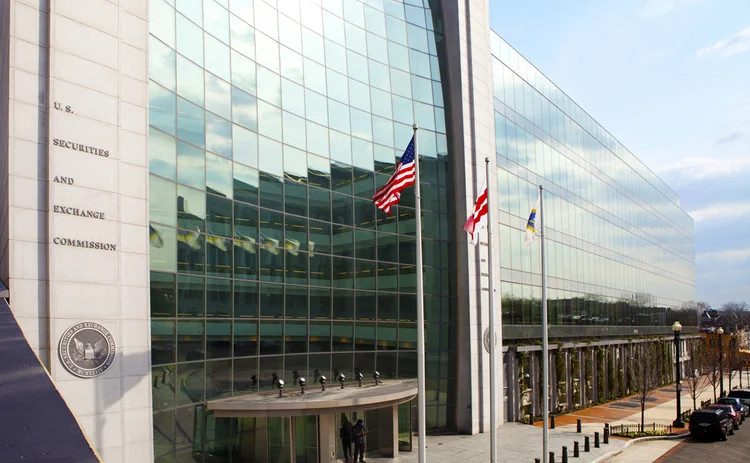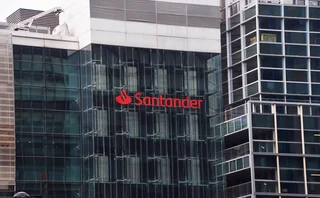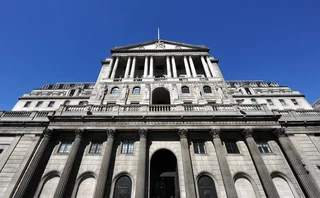Off target: SEC dealer rule will hurt those it aims to protect
Regulator’s plan could harm US Treasury markets and make it costlier for Americans to borrow, says Don Wilson

It was one of the most significant shocks to the US Treasury markets in decades – the early days of the Covid pandemic. Bid/ask spreads widened dramatically, and market depth deteriorated to levels not seen since the 2008 global financial crisis. People asked: will non-bank entities step in and support the markets?
In March and April 2020, DRW’s market share across all maturities of Treasury futures – where liquidity was especially essential – increased by an average of 60% over the previous 12 months.
But our ability to do this – and the ability of others like us – would have looked much different if non-dealers had been subject to a new proposed dealer rule from the US Securities and Exchange Commission, which would greatly expand the number of firms required to register as dealers with the agency.
The SEC is touting its proposal as an important step in strengthening the US Treasury market. What it actually does is subject a wide swath of the market to cumbersome, expensive and restrictive registration and capital allocation requirements, wedging active traders into a ‘dealer’ category created by Congress to protect customers.
Except that we – and many other trading firms that will be subject to these new requirements – do not have customers. In fact, in Treasury markets, we are the customer. And the proposal will in practice have the opposite effect on the consumers it seeks to protect.

The proposal subjects a wide swath of the market to cumbersome, expensive and restrictive registration and capital allocation requirements
Don Wilson, DRW
While dealers routinely buy and sell securities in the daily course of their business, many non-dealer market participants allocate capital based in part on where the opportunity set is greatest. This flexibility is especially important for smaller firms that have a more limited set of resources. The SEC’s proposal will place significant barriers to this nimble capital allocation, causing firms under the rule’s purview either to shrink their participation or to leave the market altogether.
Some ask if it’s possible to quantify the negative effects this proposal will have on liquidity in the market. It’s an important and relevant question, but it’s hard to do across the market as a whole. Every active trader will have to do an internal analysis, considering its cost increases, and decide how to participate in the market going forward. It’s hard to see how this alone won’t be seriously disruptive to the market in the short term.
At a macro view, it highlights an important gap in the work done to date on the proposal. There has been no formal assessment of its impact on the market or its real-world implications, including how the current raft of SEC proposals to reform Treasury market regulation will come together.
Firms that make markets in US Treasuries are already required to be registered as dealers; if there are gaps in the existing framework, where market-makers aren’t registering, the SEC should identify them and propose a targeted solution. This is not that solution. This is a far-reaching proposal that makes the nature of the activity irrelevant and effectively eliminates this longstanding ’dealer-trader distinction’. Even firms that are only in the market to hedge could hit thresholds that require them to register as dealers. It’s impossible to see how this levels the playing field, as many have claimed.
It’s a broad-brush approach that will almost certainly have major negative consequences for the vibrancy of the market.
And it will crash headlong into a period of all-time high debt issuance, driving up borrowing costs for the US government and ultimately for taxpayers.
Keep the oxygen flowing
In the past decade, non-bank dealers have established themselves as key liquidity providers in the US Treasury markets. In 2017, at a meeting of the Federal Reserve, its then chair Janet Yellen spoke about the US Treasury market, affirming its role as a global benchmark and the largest and most liquid government securities market in the world.
Specifically, her remarks focused on the importance of liquidity in the Treasury market – liquidity that helps provide stability in pricing, shock absorption during volatility and transparent, efficient trading. In particular, she noted that large dealers were holding fewer inventories, while algorithmic traders and institutional investors were becoming significant sources of liquidity.
The market dynamic has continued to evolve since then, so that non-dealer participants now contribute significantly to overall market liquidity.

The diversity of this non-dealer group of participants is a new source of resilience. There is immense value to the market in having diverse types of participants with different investment and trading strategies, different risk tolerances and different business models – especially in turbulent markets.
As a non-dealer participant, DRW supports numerous regulatory proposals aimed at further strengthening the US Treasury markets, including increased reporting requirements for market participants. The creation of a public post-trade reporting regime is long overdue. Transparency is fundamental to a well-functioning market, and it is nonsensical that the most liquid and important market in the world is one of the most opaque. Creating a unique counterparty ID database, such as exists in derivatives markets, would improve the official sector’s view into the activity of every market participant. The benefits of both these efforts would exceed those derived from the current proposal without presenting the same liquidity risks.
It's also important to consider the SEC’s concurrent proposal to mandate clearing for a wide range of cash Treasury and repo markets. An excellent paper, presented by Darrell Duffie at Jackson Hole in August, shows there are meaningful benefits from repo clearing and Treasury trading. If repo is cleared, a clearing house standard haircut on every position will provide welcome transparency and create a de facto cap on leverage – each position will have the appropriate margin posting. Widely adopted clearing will make the dealer proposal superfluous. We are hopeful the SEC will instead focus its attention on passing this rule.
Expanding clearing cannot be done overnight, however. It will require additional changes to current models and changes in access to the market. Firms like DRW will bear some of those costs. We should still do it – it’s the right thing for the market – it will boost market resiliency and open up the market to additional trading counterparties.
To a market outsider, this may all look like financial institutions fighting over costs and profits. But the Treasury market is like oxygen for the system – it’s silent and invisible – but it’s when you realise it’s not flowing freely that it becomes a crisis.
If the SEC’s proposal tamps down Treasury market participation, the result will be less oxygen for the system. It will make it more expensive for the US government to borrow at the very moment the Treasury needs to increase debt issuance to fund record deficits. These increases in costs will be borne by consumers and taxpayers, who already face higher inflation, rising interest rates and other headwinds.
The SEC’s mandate is to protect customers and ensure fair, orderly and efficient markets. The proposed dealer rule achieves neither and would make the US Treasury market significantly less resilient at a critical time. The SEC should withdraw its proposal for the sake of Treasury market liquidity and the cost of borrowing across the spectrum.
Don Wilson is founder and chief executive officer of DRW, a global trading firm active in a number of asset classes, including US Treasury cash and futures markets. Since founding his eponymous trading firm in 1992, he has been recognised as a vocal proponent of fair and transparent markets.
Only users who have a paid subscription or are part of a corporate subscription are able to print or copy content.
To access these options, along with all other subscription benefits, please contact info@risk.net or view our subscription options here: http://subscriptions.risk.net/subscribe
You are currently unable to print this content. Please contact info@risk.net to find out more.
You are currently unable to copy this content. Please contact info@risk.net to find out more.
Copyright Infopro Digital Limited. All rights reserved.
As outlined in our terms and conditions, https://www.infopro-digital.com/terms-and-conditions/subscriptions/ (point 2.4), printing is limited to a single copy.
If you would like to purchase additional rights please email info@risk.net
Copyright Infopro Digital Limited. All rights reserved.
You may share this content using our article tools. As outlined in our terms and conditions, https://www.infopro-digital.com/terms-and-conditions/subscriptions/ (clause 2.4), an Authorised User may only make one copy of the materials for their own personal use. You must also comply with the restrictions in clause 2.5.
If you would like to purchase additional rights please email info@risk.net
More on Comment
Op risk data: Mastercard schooled in £200m class action
Also: Mitsubishi copper crunch, TD tops 2024 op risk loss table. Data by ORX News
Transforming stress-testing with AI
Firms can update their stress-testing capability by harnessing automated scenario generation, says fintech advocate
Op risk data: Santander in car crash of motor-finance fail
Also: Macquarie fined for fake metals trade flaws, Metro makes AML misses, and Invesco red-faced over greenwashing. Data by ORX News
‘It’s not EU’: Do government bond spreads spell eurozone break-up?
Divergence between EGB yields is in the EU’s make-up; only a shared risk architecture can reunite them
Why there is no fence in effective regulatory relationships
A chief risk officer and former bank supervisor says regulators and regulated are on the same side
An AI-first approach to model risk management
Firms must define their AI risk appetite before trying to manage or model it, says Christophe Rougeaux
Op risk data: At Trafigura, a $1 billion miss in Mongolia
Also: Insurance cartels, Santander settlement and TSB’s “woeful” customer treatment. Data by ORX News
UST repo clearing: considerations for ‘done-away’ implementation
Citi’s Mariam Rafi sets out the drivers for sponsored and agent clearing of Treasury repo and reverse repo







